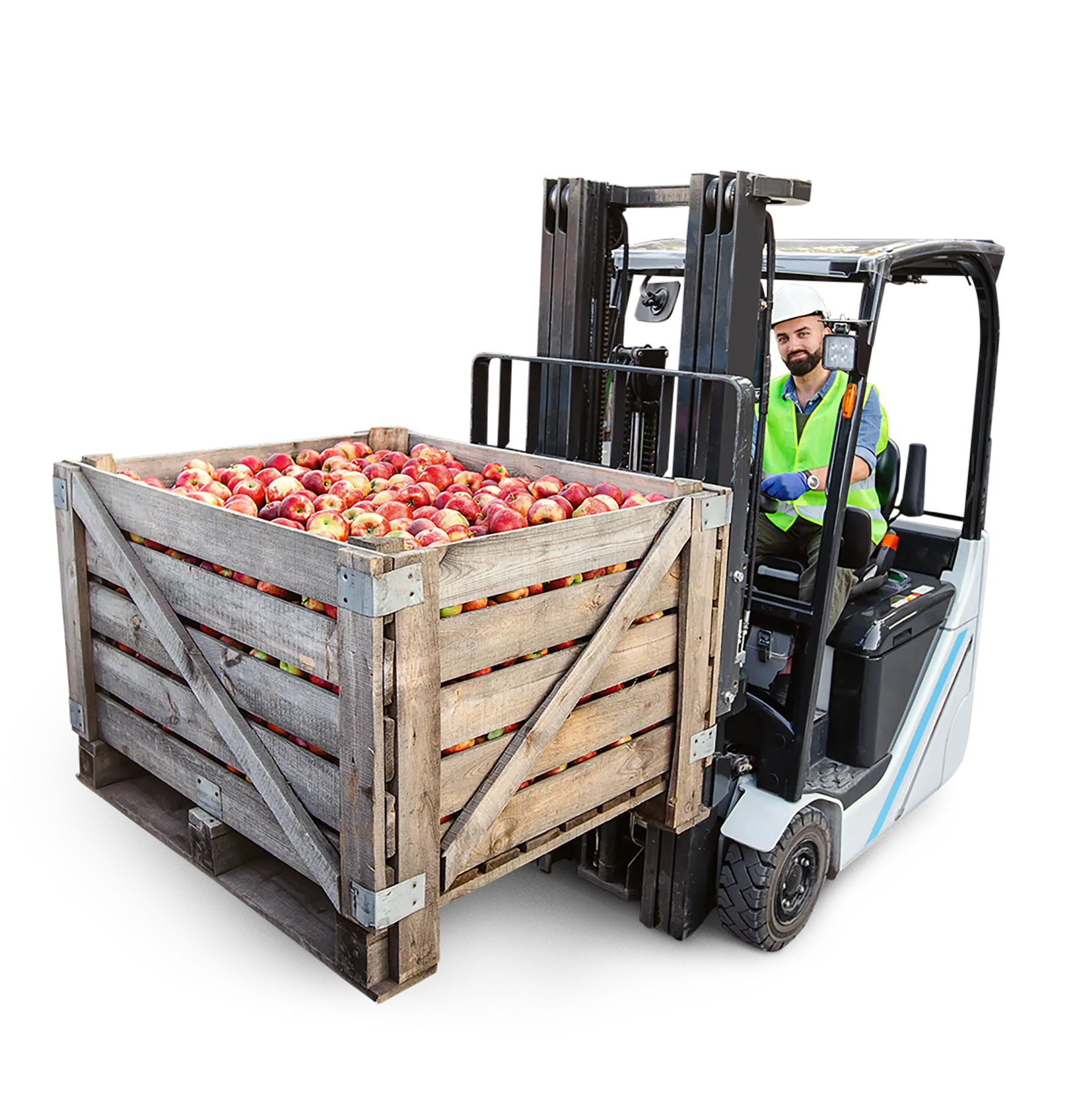En vedette dans cet article
4 Ways Industry-Specific Solutions Can Help Drive More Sustainable Food Manufacturing
4 Ways Industry-Specific Solutions Can Help Drive More Sustainable Food Manufacturing
15 Févr 2023
 John McCurdy | Senior Content Writer, Marketing
John McCurdy | Senior Content Writer, Marketing
To say that sustainability is a top priority for food and beverage businesses right now would be an understatement. In IDC’s Global Food and Beverage Industry Trends and Strategic Insights whitepaper commissioned by Aptean, that single objective was identified as both the top trend that respondents’ businesses plan to prioritize as well as the top area of focus for risk mitigation.
The most commonly cited motivating factors for this push were customer demand for eco-friendly products, a desire for a competitive advantage in the market, the need to improve financial performance and greater assurance of compliance with regulations. While all four are sound reasons to pursue the goal of getting leaner and greener, the first was not only the top response in the survey but has also been demonstrated in other studies.
That includes Cargill’s most recent FATitudes survey, which showed that 55% of consumers are more likely to purchase a packaged food item if it includes a sustainability claim—as well as recent research by Morning Consult, which found some 77% of respondents believe food and beverage brands have at least the same or more responsibility than consumers for sustainable practices.
Those two stats alone should send a powerful message to food and beverage companies—after all, shoppers and their purchase choices are the main drivers of revenue. That said, it’s also important to point out the value of boosting brand reputation and differentiating from the competition through greater sustainability, which also appeared on the list of top motivating factors in the IDC survey.
Of course, as insightful as all these findings are, you likely have questions about the “how”—that is, the best strategies for actually reducing your organization’s environmental impact and making measurable headway on your sustainability initiatives. It makes sense to concentrate on manufacturing processes first, as that’s where you have the most control, and also the greatest potential impact through positive change.
Technology can be your greatest ally in these efforts, especially if it’s purpose-built for the food and beverage space. So, without further ado, let’s dig into the specifics and examine four ways that industry-specific solutions can improve the sustainability of your business’s manufacturing processes and reduce unnecessary waste. We’ll also highlight some of the ways that Aptean software stands ahead of the pack on this front thanks to deep commitment to the market and cutting-edge features.
1. Employing a FEFO Method for Picking Ingredients
Using a first-expiry, first-out (FEFO) methodology for picking of ingredients for production is considered best practice for multiple reasons, including greater confidence that retail clients will receive products with plenty of remaining shelf life and consumers will enjoy them at peak freshness. It’s also a critical practice if you want to minimize spoilage, which is particularly significant given that food waste is the single most common material landfilled and incinerated in the U.S.
But employing a FEFO method requires keeping track of the expiration dates of all your raw materials and finished goods, which would be difficult at best when using manual record-keeping processes. That’s why the expiration management features of leading enterprise resource planning (ERP) food systems—like Aptean Food & Beverage ERP—are indispensable. They help your employees pick ingredients in the ideal order to ensure the least amount of product is wasted and your margins are protected.
2. Using Data-Driven Insights for Production Planning
Reliable insight into the quantities of ingredients that will be necessary to fulfill customer orders is vital not only for capitalizing on demand but also minimizing leftovers that can’t be consumed before they expire. It’s also important to keep in mind that shortages of one material can delay production to the point that another material that’s intended for the same end product goes bad before it can be utilized, compounding the problem.
Thankfully, the forecasting features of food ERP software can help your procurement and manufacturing managers make decisions informed by accurate projections that account for historical sales figures, seasonal trends and on-hand supplies. Likewise, production planning tools help key staff compare orders with current inventory and align supply with demand optimally to keep the risk of waste through excess goods that could be lost to spoilage at a minimum.
of consumers are more likely to purchase a packaged food item if it includes a sustainability claim
3. Investing in Recipe Management Tools
Without a sound system in place to help manage your formulas and recipes, you risk having greater variance in results that leads to more scrap and excess consumption that drains your resources without any hope of return. Measurements made by hand—or worse, estimations made simply by “eyeballing” the amounts of various ingredients—represent a risk of error that could seriously set you back on your path to greater sustainability.
With the product specification tools of a food and beverage ERP solution, all item-level values are directly linked to production bills of materials (BOMs), which enables more accurate bottom-up calculations for your recipes. Those in turn can be linked back to the product in your system, helping to ensure that going forward, you’re using only the ingredients you need to avoid excess expenditure of raw materials.
4. Monitoring Performance and Maintaining Equipment
Flawed production processes and malfunctioning machinery can both contribute to otherwise avoidable waste or energy consumption. For example, something as simple as a baking temperature set too high due to a faulty thermostat can ruin an entire batch of goods, and a poorly maintained conveyor system can be bogged down by friction and thus end up drawing more power than would be necessary if it had been properly serviced.
To help monitor for these sorts of issues—and hopefully prevent them from happening at all—you can look to implement overall equipment effectiveness (OEE) and enterprise asset management (EAM) systems at your facilities. Our OEE software can connect directly with your manufacturing equipment to track performance and measure scrap, while our EAM solution will help you keep on top of regular preventive maintenance and ensure that your manufacturing hardware operates optimally.
Taking the Next Step for a More Sustainable Future
Having reached the end of this post, you’re hopefully feeling more informed on the best practices that help food and beverage businesses control their impact on the environment. We’ve also introduced you to three different business systems that can help you meet your objectives through the application of purpose-built technology, but there’s even more to learn about them and how they drive sustainable food manufacturing.
For that reason, we highly recommend you check out our recently released eBook called Sustainable Production and Distribution: A Food Industry Playbook. It’s packed with great strategies that can help your business become more environmentally responsible, from one end of the supply chain to the other. We also developed a quick and fun Food and Beverage Sustainability Quiz that can help you understand where your company is succeeding in your efforts and where improvements can be made.
Then, if you’re ready to take that next step in your digital transformation and start researching your software options on the market, let us first point out a few reasons why Aptean should be at the top of your list. First, there’s our dedicated professionals’ decades of collective industry expertise and deep knowledge of the unique challenges that modern food and beverage organizations face.
Our solutions also deliver considerable out-of-the-box value. In particular, Aptean Food & Beverage ERP really shines, as it requires no costly add-ons, modifications or customizations that a basic, “one size fits all” ERP might. And considering food and beverage businesses with an industry-specific ERP saw revenue growth of 5.3% in 2022 as compared to just 2.9% for those with generic solutions (another statistic gleaned from the aforementioned whitepaper), the financial advantages are pretty clear.
What’s more, we approach implementation with each of our customers as the beginning of a successful partnership. We’ll be there to help you sketch out your initial roadmap to deployment and provide service along the way. We also offer flexible cloud setups on the Software as a Service (SaaS) model that can give you the edge with full scalability, better data protection, enhanced cybersecurity and greater accessibility for our on-the-go, real-time world.
Finally, there's the fact that we’ve received prestigious recognitions from third parties for our solutions’ ability to deliver on quality, reliability and performance. In particular, our food ERP won Frost and Sullivan’s 2022 Product Leadership Award in North American ERP Software for the Food and Beverage Industry.
So, ready to learn more about Aptean’s suite of food and beverage manufacturing solutions and how they can help your organization make strides toward sustainability? Contact us today or request a personalized demo.
Sustainable Production and Distribution
Sustainable food production and distribution is easier to achieve when broken down into a play-by-play strategy. Aptean has collated key plays to help optimize your sustainability strategy.



